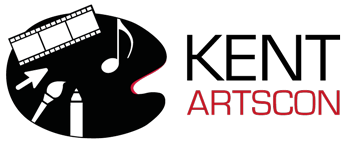Sebastian May is a practicing artist and environmental activist with a background in painting and illustration. He has spent considerable time researching and writing about Land Art and in 2020 founded Land Art Coalition uniting artists and their friends to create new cultural experiences and freely exchange ideas and knowledge about Land Art. Land Art Coalition is set up to do this by
- supporting artists in making Land Art,
- engaging the public in cultural experiences,
- creating discussion about Land Art, and
- advancing understanding of Land Art.
He has 10 years worth of professional experience working across the creative industries, and is currently working for the University of the Arts London. His commercial projects include campaigning for the visual arts
sector, including external and internal communications, branding, art direction, creative content production, campaign management and marketing. As a campaign manager, he has a successful record of designing and producing multi-media content (on and off-line) for international audiences, including large-scale events for international audiences.
Workshop: Land Art
Land Art, variously known as Earth art, environmental art, and earthworks, is an art movement that emerged in the 1960s and 1970s, largely associated with Great Britain and the United States, but which continues to include artists from many countries. The often forgotten art movement is experiencing a resurgence, sometimes in the form of adaptations, with artists looking at new ways to express themselves outside of the confines of the art gallery space. Though often conceptual in nature, these artists are able to convey important messages about the way we interact with our environment, and their art practices make important comments on the way we practice and exhibit art, and on the way we engage audiences within exhibiting spaces themselves.
The class is designed to inspire participants to question and rethink the way we practice and exhibit art, social constructs, and our relationship with the environment. The class will include some lecture-style elements for historic context setting, but focus on break-out elements, where participants will be encouraged to think about alternative ways of making and exhibiting art, the environment within which this can place, as well as the importance of sociocultural and sociopolitical settings.
Discussion amongst participants will be encouraged. The class is designed to be accessible for all, equally as beneficial for newcomers and professionals to the field. Visuals will be presented on screen.
Building Bridges
Land Art is particularly relevant to the conference theme, as it relies on physical construction and design, just like the building of a bridge. Land Art questions the role of the artists as a thinking, designer, builder and craftsman, and like a bridge requires a physical environment for its construction. Conceptually, too, Land Art has the power to bring together people and make connections where none existed before.
Key questions
Amongst others, this Land Art class will encourage participants to think about some of the following questions:
- How can Land Art make contemporary art more or less accessible?
- How can Land Art facilitate the exchange of dialogues and ideas?
- How can Land Art bridge gaps between different audiences?
- Can Land Art bridge cultural and other divides such as language, religion, culture, or even geographic distance?
- What is Land Art’s sociocultural and sociopolitical relevance and impact?
- How can Land Art foster social inclusion?
- What are the privileges associated with creating and accessing Land Art?
- How do we relate Land Art to contemporary environmental issues?
- How can Land Art connect us with our environment?
- What is the relationship between Land Art and sustainability?
